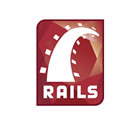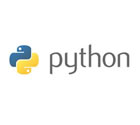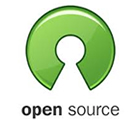Boxed Software Implementations
Much more than opening a box
There are many viable software solutions available for just about any business need. Determining the exact scope and requirements of your business needs, then determining what the most appropriate solution is. Many times that solution, or a portion of the solution can be addressed with purchased software. Due diligence and experience can determine the correct choice of software and then it is time for the implementation. Olsen Consultants can manage every step of the process from developing requirements to training users.
Many purchased software solutions involve entering into an agreement with a software vendor. Allow Olsen Consultants experience and know-how to smooth the process for you, avoid standard pitfalls and negotiate a fair price.
The implementation process
- Action Item Planning – A detailed plan of action items will be prepared by your Project Manager along with the names of the individuals who will be taking ownership for those tasks. The appointed individuals must be held responsible for the work assigned to them and should provide a status report on completed tasks and road blocks encountered on a weekly basis.
- Go-Live Date Planning – Many tasks must be taken into account before a Go-Live date
can be finalized. It’s important that the Go-Live Date not drive the process. We have seen many companies target a
Go-Live date and then plan the tasks. This is a good example of planning in reverse and always backfires.
Since you and your employees will be investing a tremendous amount of time and money, we will make sure all
tasks are identified, assigned and agreed upon by implementation team with realistic time estimates.
While a “projected” Go-Live date is necessary to drive the process, it should not be an unrealistic one and will be identified and agreed upon between you and your new vendor so that any missing steps can be identified.
- Decision Committee – Empower your people. Create a committee that can meet and make decisions. Many critical decisions have to be made – some financial. You’ll need the ability to have appointed key players who can make those critical decisions.
- Communication – This is something that we put a great deal of emphasis on. It’s important
that you get buy-in from your users. Your staff will need to know why some of their jobs will
require new tasks and new responsibilities and why some of their old tasks just won’t be necessary anymore.
Show them the pay-offs and you’ll have them eager to learn and make changes. As the project moves through various phases, be sure to communicate the progress of the implementation to all involved. It will go a long way to making your employees feel that they are part of the change and allow them to take ownership of their tasks to ensure success.
- Manager Training – It is important that you allocate the proper amount of time for on-site manager training. The time needed will vary depending on the software purchased, but should not be overlooked. The vendor knows the software the best and will be able to answer any questions or solve any scenarios that may be identified by your staff. Training should include manager hands-on sessions so that your employees are able to actually experience and get familiar with the software which goes a long way to their acceptance.
- User Training and Testing – We will set up a special location (often called the “war room”)
that has all of the required hardware and software installed so that end-to-end user testing and practice
sessions can be performed. Each type of transaction should be followed through the system in detail by
representatives from each department involved to be sure everyone is familiar with the transaction flow
and that all of the steps are followed and understood.
Training and testing allows everyone to visualize the new system in action and to interact, and helps improve process plans and ultimately project success.
- Parallel Testing – This is a very critical step that is often overlooked. It is
crucial that your daily work is processed on your old system and also on your new system prior to Go-Live
so that everyone one knows their new roles and responsibilities and questions/issues can be addressed
without the added pressure of a Go-Live environment. A comparison of reporting on the old and new system
will be put in place to be sure there are no hidden surprises.
Parallel Testing will not only provide you with the ability to test out new procedures, it will go a long way in gaining your staff’s confidence that you are prepared for Go-Live.







